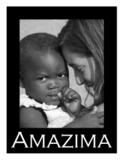History and Language
Family Culture
Family in Ethiopia Ethiopia n culture. Ethiopia ns are very respectful and loving. The elderly are considered very knowledgeable and as a very important part of the family structure. Children are usually raised in a large community that includes extended family and neighbors, and siblings are expected to help take care of each other.
Food and Calendar
Traditional Ethiopia n food consists of various vegetable or meat dishes, usually a wat or thick stew, served atop injera, a large crepe-like sourdough flatbread made from fermented teff flour. One does not eat with utensils, but instead uses a piece of the injera (always with the right hand) to scoop up the sauces.
The Ethiopia n calendar is very similar to the Egyptian Coptic calendar – each have 13 months, 12 of 30 days each and the 13th month at the end of the year with 5 or 6 days, depending on whether it is a leap year. The year starts on September 11th (12th in a leap year). The Ethiopia n calendar is 8 years behind the Gregorian calendar, so Ethiopia
